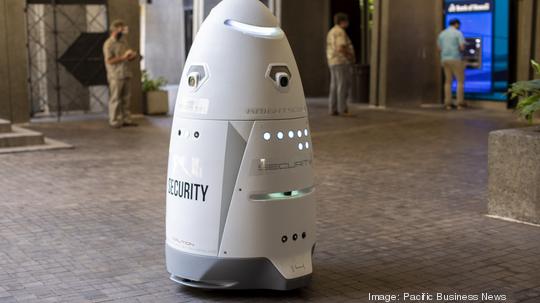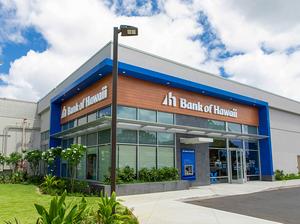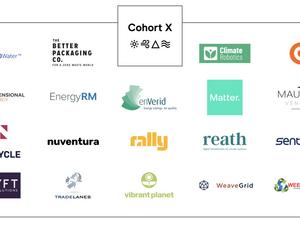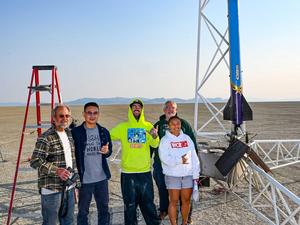
In the roughly two months since Bank of Hawaii debuted two robot security units at its Downtown Honolulu headquarters, heads have turned, passersby have stopped, and selfies with the pearly white, cone-shaped curiosities have been frequent.
Curious glances still occur as the 5-foot-tall artificial guards patrol about the Financial Plaza of the Pacific at 3 mph, though perhaps not quite as frequently as when the robots debuted, according to Patrick McGuirk and Brian Ishikawa of BOH.
“I think people are still surprised to see them, but I think it also is becoming a lot more, shall we say, a new normal,” said Ishikawa, the bank’s senior vice president and director of corporate security, in an interview with Pacific Business News. “Overall, we were happy that it was accepted in a positive way. I think the folks understand our intent that we’re trying to add to our [security] posture.”
Added McGuirk, BOH’s senior executive vice president, chief general counsel, and corporate secretary, “It’s certainly still causing a lot of … engagement, which is good. Part of it is raising the profile of our security here, and doing what it is we can to keep employees and customers as safe as we can.
“[It’s] a more mobile, interactive way for us to keep an eye on what’s going on.”
The units, dubbed SR1 and SR2, operate autonomously 24 hours a day in an established patrol zone. Their 360-degree cameras are monitored remotely by two teams — BOH’s guard staff, as well as the robots’ developer, Knightscope.
BOH said it has kept its number of human security guards the same, but the robots have freed up some from monotonous patrol routes. They can deliver voice messages, either in direct speech from an operating human guard or via text-to-speech. People can also ask questions of security staff via a button or press another for emergencies.
PBN asked if the robots’ introduction was a result of science fiction enthusiasts, but McGuirk replied it arose from broad thinking about how the bank could enhance its security in the pandemic era; general foot traffic downtown was reduced, and there were also concerns about guards getting sick.
“We’re always thinking about ways to innovate in banking, assist our customers more efficiently, more effectively,” McGuirk said. “It makes sense for us to look at all aspects of our business this way, including the security aspect.
“It is also cool,” he added.
The units constantly being on the lookout with cameras outside the HQ or in the parking structure is a natural extension of the surveillance people come to expect while in a bank itself, McGuirk said. The robots know to recharge themselves at specific ports when they are low on battery.
They are the first such ones in Hawaii, though not on the Mainland, BOH said.
Knightscope offers a “Machine-as-a-Service” business model on an annual basis and says on its website that the effective price is “approximately $4 to $9 per hour.”
“Knightscope was a smart company to market it that way, because breaking down the lease into an hourly comparison, allows a user like us to look at the current human guard bill rates, and make an apples-to-apples comparison,” Ishikawa said. “It was part of our business analysis when we made that decision. I won’t say how much we’re paying, but it’s essentially cheaper to get some robots on site to get an additional guard 24/7, 365 [days] out of the year.”
PBN asked if the robots have been physically harassed by mischief-minded people, particularly overnight. Ishikawa replied that such incidents have been minimal for the sturdy, 400-pound units, and added that human guards are still in the vicinity.
There are no immediate plans to expand beyond the two units for the time being, BOH said, either for more at the HQ or at its various branches.
“But it’s a pretty safe bet that in the future, bank security is going to be more and more reliant on new technological advances,” McGuirk said.







